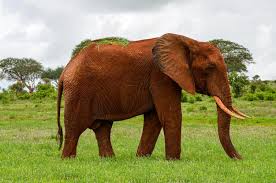Kenya offers excellent wildlife viewing, of the big five are regularly seen on a standard safari. The Masai Mara is one of the best places in Africa to see big cats and white rhinos is easily seen at Lake Nakuru. The Rift Valley lakes, especially Lake Bogoria, attract thousands of flamingos which feed in the shallow waters.
The country adopted new Wildlife Conservation and Management Act (WCMA) in December 2013. (No. 47, KENYA GAZETTE SUPPLEMENT, No. 181 (Dec. 27, 2013), Kenya Law website.)
KeNRA played a big role in the development and lobbying of the Bill into law and its respective policies. This was done throught its member organisations who work in the thematic area which include among them Kwale County Natural Resources Network, Endrois Welfare Council, Samburu County Forum, Ngua Mlambo Development Trust, Laikipia Natural Resources Forum and many others.
The WCMA repealed and replaced the Wildlife (Conservation and Management) Act, 1976 . The WCMA categorizes the country’s species of wildlife into four classes: critically endangered species; vulnerable species; nearly threatened species; and protected species. The WCMA prohibits any activity involving a listed species without a proper permit Although it imposes absolute prohibitions on sports hunting or any other recreational hunting,hunting for bush meat, and subsistence hunting of wildlife species, the WCMA permits a number of consumptive wildlife use activities under license. These include:
- Game farming: raising wildlife in a controlled environment for conservation, trade, and recreation;
- Game ranching: keeping wildlife under its natural conditions for the purpose of use in conservation, recreation, and trade, but permissible only with respect to certain animals (e.g., crocodiles, tortoises, snails, frogs) and certain birds (e.g., ostriches, pigeons, and ducks);
- Live capture;
- Research involving off-take;
- Cropping: harvesting wildlife for products in game farms and ranching operations under certain conditions authorized by the Minister of Forestry and Wildlife; and
- Culling: selectively removing wildlife for management purposes. The Minister may authorize culling in wildlife conservation areas as a management tool, provided that no other tools are available and it is supervised.
The WCMA also permits dealing in and import, export, and re-export of wildlife trophies under license; however, a number of restrictions apply. The licenses are to be issued for only one year at a time, they do not have blanket application (licenses are issued only for certain classes of trophy), and they are non-transferable. In addition, import, export, re-export, or trade permits will only be issued if the purpose of the activity would not put the survival of the concerned species in danger; if the concerned communities have been duly compensated; and, in the case of export or re-export, if the relevant authority in the concerned country has approved the activity.
KeNRA member organisations have been working to ensure the law is implemented and community benefit from the low lying fruits accruing from the WCMA. Through conservancies, member organisations such as SamburuCounty Natural Resources Forum,, Laiconar organise its members to ensure they benefit from wildlife. Despite all these efforts, there is need for more resources to increase training of community conservancy rangers.

